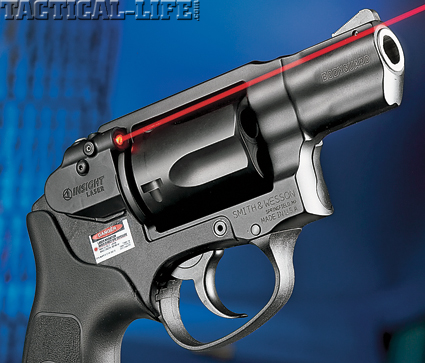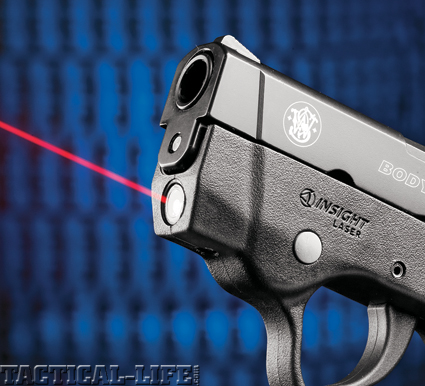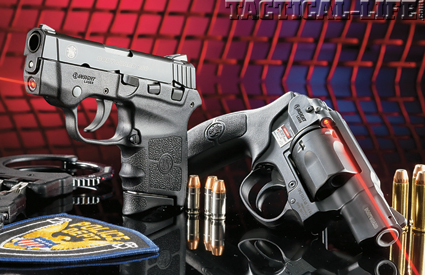WHEN IT COMES TO HAVING A CORNER ON THE DEEP-COVER carry market, nobody beats out Smith & Wesson. Beginning with the “Chief’s Special,” an ultra-compact snubnose packing five rounds of .38 Special into the tiny J-frame package, the company created the basis for what would become the iconic deep-concealment revolver and back-up gun for law enforcement officers around the country.
 An integrated Insight red laser sight assembly is located to the right rear of the cylinder on the Bodyguard 38.
An integrated Insight red laser sight assembly is located to the right rear of the cylinder on the Bodyguard 38.
With lightweight variants, differently chambered versions, and ones with longer barrels or different grips or different sights, it seemed that just about every variation of the design was developed for every conceivable contingency. However, at its core, the classic J-frame was a design from a different era, being first offered in the 1950s, and one that was both time-consuming and relatively expensive to manufacture.
Advertisement — Continue Reading Below
Although sales were (and still are) extremely strong on the traditional J-frames, Smith & Wesson recognized that there was a need for the development of a radically modern deep-concealment revolver—one that took advantage of the most modern of materials and construction methods and that hit a lower retail price point.
 The Insight laser module of the 380 is internally located within the dustcover portion of the polymer frame. Note the light gray round activation button.
The Insight laser module of the 380 is internally located within the dustcover portion of the polymer frame. Note the light gray round activation button.
Concurrent with this realization was an acknowledgement on Smith & Wesson’s part of the extreme demand in the market for deep-concealment semi-autos chambered in .380 ACP that offered good power in a very small package. In response, the company began the process of developing what we now know today as the “Bodyguards”—a .38 Special revolver and .380 ACP sub-compact autopistol.
Advertisement — Continue Reading Below
























